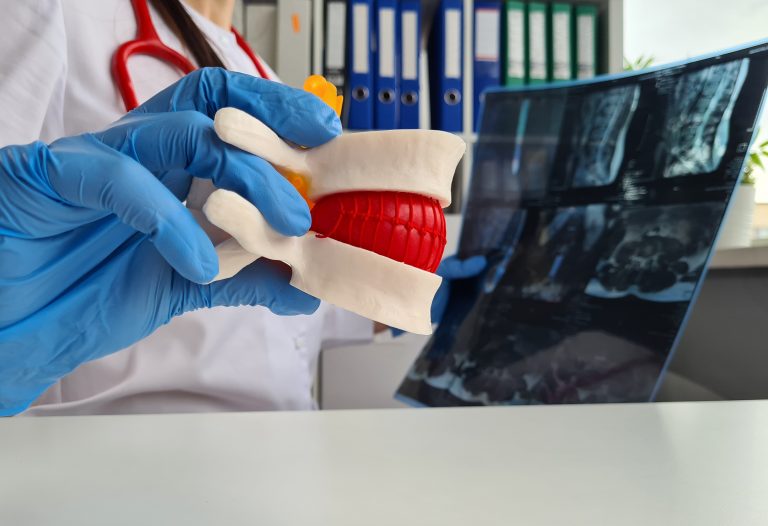An intervertebral disc is located in between most of the round bones that stack to form the spinal column, called vertebrae. In total, there are 24 individual vertebrae in the upper three regions of the spine, with vertebral discs in each between each set except the top two in the upper neck, directly below the skull.
Where is it Located
Intervertebral discs are located throughout the entire spine:
- Cervical intervertebral discs are located at the top of the spine in the neck
- Thoracic vertebrae discs are located in the middle of the spine, adjacent to the rib cage
- Lumbar intervertebral discs are located in the lower spine
- The sarum and coccyx are at the bottom of the spine. The additional nine vertebrae in these sections naturally fuse together and do not have intervertebral discs
What Happens When an Intervertebral Disc Moves
Because of the amount of pressure they have to withstand on a daily basis, these discs are prone to conditions that can push them out of their normal place in the spinal column. This can be the result of sudden trauma or it can be the result of gradual degeneration. These conditions, including bulging discs, herniated discs, and degenerative discs, can become painful if any disc material puts pressure on the nerves in the spine.
Treatment Options for Displaced Intervertebral Discs
Upon diagnosing a condition affecting one of the intervertebral discs, most doctors will recommend a course of conservative treatment options. Periods of rest, physical therapy, medication, exercise, and improving posture can help patients with pain and mobility problems enough to regain normal activity. Surgery is usually seen as a last resort treatment due to the highly invasive nature of most procedures.
If you’re dealing with an intervertebral disc that has bulged, torn open, or lost its height and has not gained relief from conservative therapies, reach out to BEST Health System. Our minimally invasive outpatient procedures are performed by our board-certified surgeons Dr. Girton and Dr. Abbott. Minimally invasive serves as an alternative to traditional open spine procedures performed in a hospital setting. By accessing the spine with a less than one-inch incision, these procedures spare important supporting muscles. They also lead to a lower risk of complications like infection.
To find out if you are a candidate for minimally invasive spine surgery at BEST Health System, contact us today!
